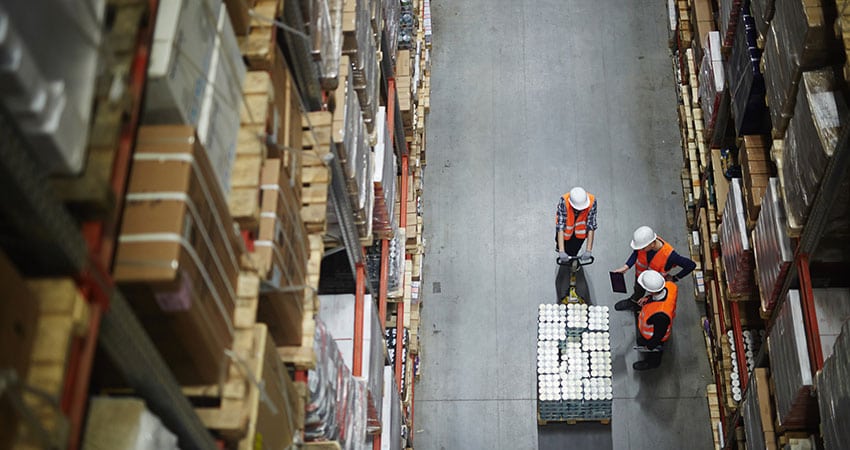In a recent client project, we were tasked with finding an ecommerce warehouse to replace a 40-year-old, 100,000-square-foot building. The company is based in Virginia and didn’t want to leave, but there were no available existing facilities of their size in the state, let alone ones that allowed for expansion.
Management had no choice but to pursue a build-to-suit plan which will take more than two years, the typical timeframe.
According to recent research by commercial real estate firm CBRE, the average age of U.S. warehouse facilities is 34 years. In the 56 major markets surveyed, warehouse age ranged from 57 years in northern New Jersey to 20 years in Riverside and San Bernardino counties, east of Los Angeles.
If your company is expecting to move your ecommerce warehouse within two years, our recommendation is to immediately accelerate your requirement planning. As we have written before, existing warehouses that meet ecommerce requirements are in short supply. On top of that, age and condition may make some available facilities unacceptable.
As you look at your building requirements, it’s paramount to consider the configuration of the footprint and the clear span ceiling height, and how they will affect your storage capacity and ability to process orders. Here are a few key physical characteristics to help in your decision process:
Ceiling Height and Clear Span
Considering the characteristics of older buildings, ceiling height and clear span make many of them less attractive for large, fast-growth ecommerce companies that need high cubic storage and allow for expansion. CBRE found that ceiling height in facilities built in the 1960s averaged 24 feet, whereas those built in 2016 averaged 33 feet.
The latter clearance allows an ecommerce company to install four or five tiers of pallet rack, depending on pallet size. In the future CBRE feels the buildings will have 40-foot ceilings. Above that you need totally different lift trucks and material handling equipment (MHE) which is cost prohibitive and not practical for many companies.
Facility Condition
The condition and configuration of older facilities makes it more difficult to efficiently install conveyors, MHE and pallet racking. As an example, older warehouses without high bay storage and MHE installed often do not have standard column placement which allows maximum use of the space for pallet racking and aisle width.
In urban areas, older warehouses formerly serving retail stores may be multi-floor and accessed by elevators, with uneven floors. This makes it difficult to use picking carts, pallet jacks and lift trucks.
Number of Dock Doors
For inbound and outbound shipping, larger ecommerce companies may require 15-20 doors to schedule more truck appointments and avoid yard congestion and jockeying trailers.
In order to meet same-day shipping demands, how many dock doors are required for inbound receipts and returned product in your company? Outbound may require multiple dropped trailers during peak periods. How much dock and staging space is required? With expansion, will the number of dock doors change?
Acreage Requirement
A modern ecommerce warehouse may require more acreage than older facilities to allow for expansion, peak season parking, increased truck egress and trailer storage. These requirements dictate acreage that many existing locations do not have.
Plan of Action
Regardless of the size of your business, these steps apply to making a space decision. Decisions on facilities end up being 5-to 10-year decisions. Inefficient space can hurt productivity and add costs.
Develop 3-5-Year Requirements
In addition to the above requirements, determine the number of bulk and forward pick slots you’ll need based on your number of SKUs and inventory. How much square footage do you need for each department (receiving, staging, QA, storage, picking, assembly, packing, returns, employee facilities and break rooms, lobby, offices and conference rooms)? What future requirements and expansion will be required?
Determine Available Existing Facilities
Determine if an existing facility is available in the marketplace you wish to site the facility. Use a commercial real estate broker or consultant that have access to nationwide real estate listings. A smaller client which needed 15,000 sq. ft. acquired a 33,000 sq. ft. facility, partitioned it off and leased it to another small business. Now they have space for future expansion.
Develop a Move Plan and Budget
For a detailed explanation of this subject, including management planning, see our earlier blog post here.
Decision Urgency
In many major markets available space is above 90% occupied. Your company’s management need to be prepared to move quickly if you find a facility that meets your requirements. We have had several projects in the past year where management took three or four months to decide and lost out on the property.
Warehouse availability varies by market. Because of the long-term commitment, companies need to take into account how the space selected affects productivity and costs longer term.
Brian Barry is president of F. Curtis Barry & Company

